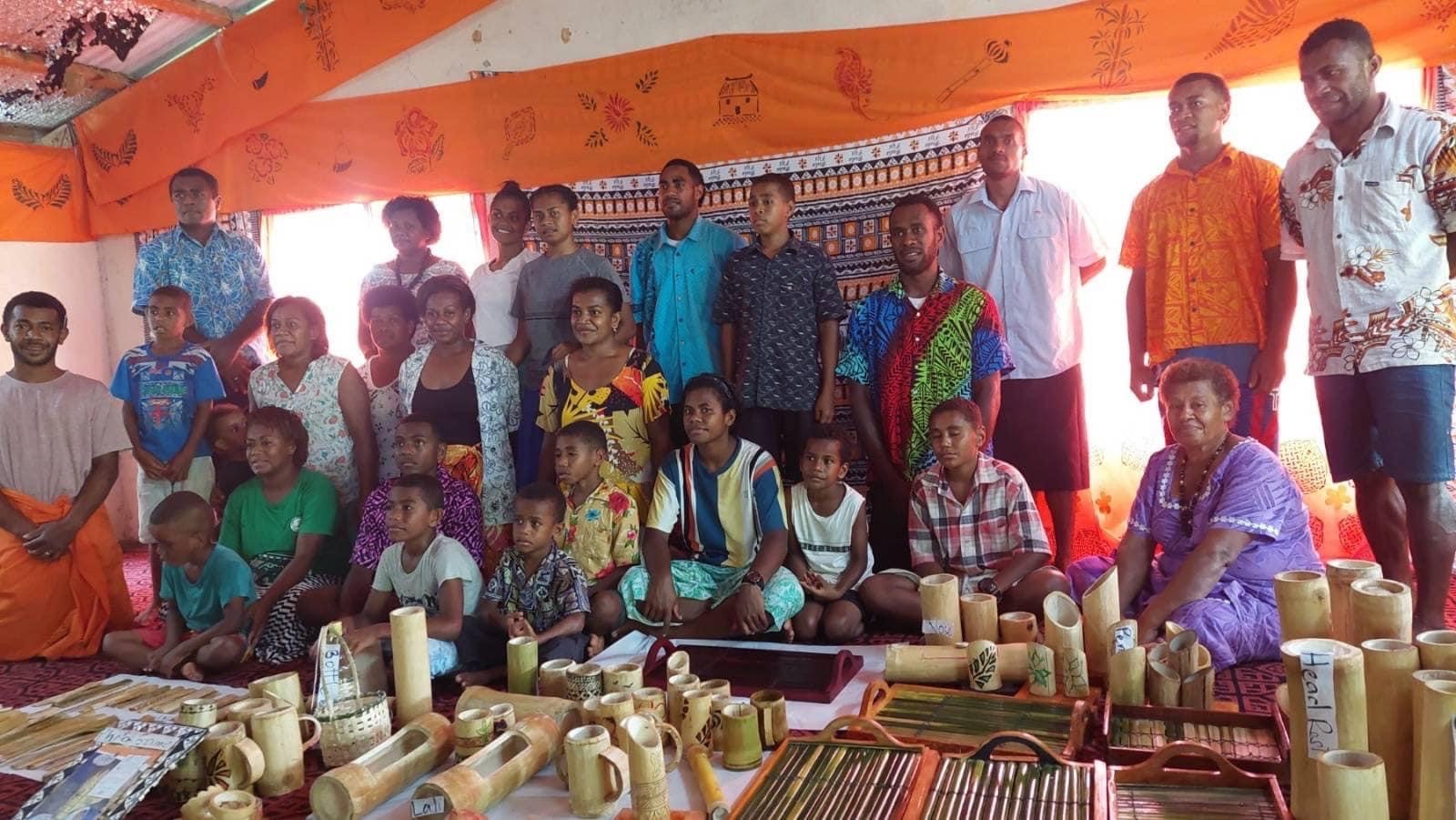
Bamboo Provides Alternative Livelihood for Communities
For Sukulu Soko, the potential for bamboo is endless. One of the recipients of the inaugural forestry subsidy initiative in 2019, Soko has been using his knowledge of bamboo to identify species and train communities on its uses.
Community Development
Working with the Ministry of Forestry’s Forest Products, Trade and Training (FPTT) division in Nasinu, Soko helps communities realise the earning potential of bamboo through the awareness and product development training that he provides.
An independent consultant and bamboo expert in Fiji, Soko is the owner and Director of Sunnyville Bamboo, a company he started in 2010.
His passion for bamboo started in 2004 when he noticed a bamboo plant with yellow leaves. “I was curious to know if the plant would grow so I planted it in a pot plant and to my surprise it grew so I documented the propagating process.”
Through the forest subsidy initiative, Soko was able to purchase equipment to assist in bamboo product development. At the training at Sote village, Tailevu in December 2022 villagers were taught to make utensils and handicraft items.
In Fiji and many other countries in Asia, Africa and the Pacific, bamboo is a key part of life and culture and has been used for a range of purposes including cutlery, construction, rafts, and fish traps.
According to Soko, “bamboo is unique in that it matures within 3-5 years so it’s a better natural resource for artisans than trees.”
Located less than an hour by car from Nausori town, Sote village is unique as it has a readily available supply of bamboo. Soko and the Ministry of Forestry research team have so far identified 4 species of bamboo including the “bitu dina” at the village.
There are reportedly 20 bamboo species found in Fiji, of which only one is indigenous; Schizostachyum glaucifolium, which is locally known as bitu dina. The exotic bamboo species were introduced into Fiji in the mid-1800s and have been widely cultivated and have now become naturalized with Fiji Bamboo. Soko is also working on a book in collaboration with the Ministry of Forestry titled “Bamboos of Fiji.”
A detailed report on bamboo stocks in Fiji will be available once the 2022-2023 National Forestry Inventory (NFI) is completed.
Local and International Use of Bamboo
Bamboo is a durable material that has been traditionally used in construction. Fijian bamboo bures are a common sight in villages but this material is also being used internationally.
For instance, the Adolfo Suárez Madrid-Barajas International Airport, the second largest airport in Europe has the largest bamboo reference project in the world to date. The curved bamboo ceiling in Terminal 4, was added during the renovation in 2005, and has become a landmark attraction for the airport.
Bamboo is also used locally as barriers on Vio Island in Lautoka. In a mangrove restoration project, to protect the island from the negative impacts of Climate Change, islanders use 400m of bamboo barriers to ensure 90% survival of the seedlings. Soko worked with the Pacific Islands Development Forum (PIDF) on this project and he says that “the barriers use the Herman design which is 2 layers of bamboo that breaks the impact of the waves thus ensuring the seedlings’ survival”.
Apart from Climate Change, the increasing demand for biomass energy such as firewood and wood charcoal has been accelerating the loss and degradation of forest resources. Like woody biomass, bamboo and bamboo charcoal have high heating values and low ash content. Therefore, bamboo and bamboo charcoal are ideal substitutes for fuelwood and wood charcoal.
The International Bamboo and Rattan Organisation (INBAR) projects and practices have effectively demonstrated the suitability of bamboo as sustainable biomass energy in Africa. The experiences and lessons learned from bamboo biomass energy will further promote affordable bamboo biomass energy to a broad population in Africa.
A “Manual for Bamboo Forest Biomass and Carbon Assessment” has been published by INBAR and is available on its website www.inbar. int for members use/reference.
Bamboo Research T
The Ministry of Forestry research currently includes exploring the preservative chemical treatment of bamboo where H3 treatment and bamboo samples are being trialed in sample plots at Nasinu.
These H3 treated bamboo samples will be assessed quarterly and reports of their service life/durability will be disseminated once all levels of preservative treatment trials have been completed.
The Ministry’s research team is also collecting bamboo species that were previously located at research plot “P25” in Wainibuku.
Acting Director of Research Iliesa Koroi said, “we hope to collect all relevant bamboo species available locally, increase its stocking in our research, and distribute it to locations where we can extract samples/cuttings for propagation as required. We are also working in collaboration with the Fiji Museum, to document, demarcate and legislatively protect (Preservation of Objects of Archaeological and Palaeontological Interest Act) a bamboo species locally known as the “bitu ni ceva” that is only found on Qoma island in Tailevu”.
Bamboo Potential
The proper use and management of bamboo plantations provides ecosystem services, including climate-change adaptation and mitigation. Bamboo plantations create alternatives for rural and small entrepreneurs and reduce the vulnerability of agro-ecosystems. Due to its fast growth and annual regeneration, bamboo can take some pressure off from other forest resources and contribute to reducing deforestation.